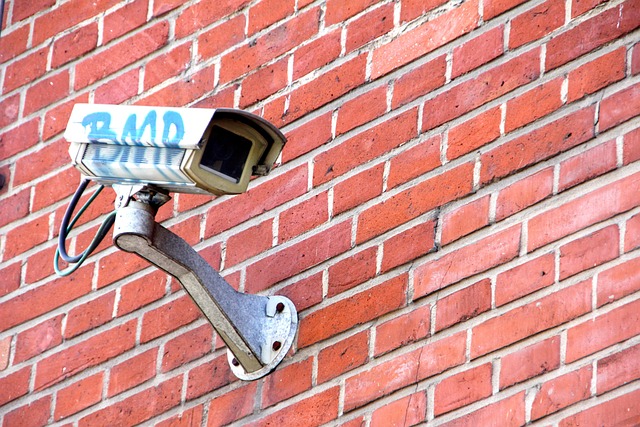HD security camera solutions offer enhanced visual data but require robust encryption to protect against cyber threats. Advanced algorithms ensure video data privacy and integrity during transmission, storage, and access, preventing unauthorized viewing or data leaks. These solutions combine clear visuals with strong encryption, secure protocols, tamper-proof designs, and role-based access controls for comprehensive protection in various settings.
In today’s digital age, protecting video data from unauthorized access is paramount. With increasingly sophisticated cyber threats, understanding the vulnerability of video data and implementing robust encryption measures is essential. This article explores effective strategies for securing video content, including encryption techniques for secure streaming, the role of HD security camera solutions, and advanced protections that go beyond traditional encryption methods. By delving into these solutions, we aim to equip readers with knowledge to safeguard their visual assets.
Understanding Video Data Vulnerability
Video data, especially from high-definition (HD) security camera solutions, is a valuable yet vulnerable asset in today’s digital landscape. As surveillance footage captures detailed visual information, it also becomes a target for cybercriminals seeking sensitive or proprietary data. The resolution and clarity of HD cameras make them an attractive resource for unauthorized access, as they provide more detailed information that can be exploited. This makes understanding the vulnerabilities crucial; without proper encryption measures, video data can be easily compromised through various means, such as hacking, data leaks, or even insider threats.
The sensitive nature of the footage requires robust security measures to protect it from end-to-end. From transmission to storage and access, each step must be encrypted to ensure privacy and integrity. By implementing strong encryption protocols, HD security camera systems can safeguard against potential cyberattacks, ensuring that only authorized personnel with appropriate permissions can view and utilize the video data, thereby maintaining the confidentiality, integrity, and availability of this critical information.
Encryption Techniques for Secure Streaming
In the realm of securing video data, especially for surveillance and monitoring using high-definition (HD) security camera solutions, encryption plays a pivotal role in protecting against unauthorized access. Encryption techniques for secure streaming involve transforming raw video data into an unreadable format during transmission, ensuring that even if intercepted, the content remains inaccessible without the proper decryption keys. Advanced algorithms like AES (Advanced Encryption Standard) and RSA (Rivest–Shamir–Adleman) are commonly employed to encrypt video streams, offering robust security against cyber threats.
These encryption methods enable secure delivery of HD camera feeds over networks, be it local area networks (LANs) or wide area networks (WANs). By implementing strong encryption, organizations can safeguard sensitive visual information, ensuring privacy and compliance with data protection regulations. This is particularly crucial for critical infrastructure, businesses, and homes that rely on HD security camera solutions to monitor their premises, as it prevents malicious actors from gaining access to live feeds or recorded videos.
Implementing HD Security Camera Solutions
High-definition (HD) security camera solutions are transforming video data protection, offering enhanced clarity and robust security features. These advanced systems capture detailed visuals, ensuring critical information is visible and traceable. With HD resolution, organizations can easily identify individuals, vehicles, or objects within footage, significantly improving incident response and forensic analysis.
Implementing these solutions involves integrating high-quality cameras with powerful encryption technologies. HD security cameras equipped with built-in encryption protocols ensure that video data transmitted and stored remains secure from unauthorized access. This prevents tampering, hacking attempts, or sensitive information leaks, thereby safeguarding privacy and maintaining the integrity of visual evidence.
Advanced Protections: Beyond Encryption
Beyond encryption, modern HD security camera solutions implement advanced protections like secure communication protocols and access control mechanisms. These features ensure that data transmitted from cameras is protected against unauthorized interception or tampering, further fortifying the security posture of surveillance systems. By integrating robust authentication methods and role-based access controls, these solutions limit video data access to authorized personnel only, adding an extra layer of defense against cyber threats.
Moreover, advanced HD security camera technologies often incorporate tamper-proof designs and anomaly detection algorithms. These innovations make it difficult for hackers to compromise the integrity of the system or steal sensitive video footage. Such comprehensive security measures not only safeguard critical data but also deter potential cybercriminals, ensuring the reliability and privacy of surveillance operations in diverse environments.
Cybersecurity encryption is an indispensable tool in safeguarding sensitive video data, especially with the widespread adoption of HD security camera solutions. As technology advances, so do threats to privacy and data integrity. Implementing robust encryption techniques for secure streaming and advanced protections beyond encryption ensures that video surveillance systems remain a step ahead of potential cyberattacks. Embracing these measures is crucial for maintaining a safe and secure environment in today’s digital landscape, leveraging the full capabilities of HD security camera solutions.
